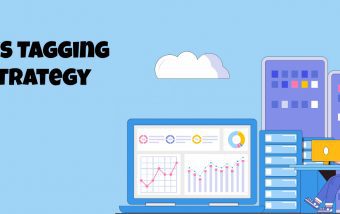How To Get Views On YouTube Shorts? Your Ultimate Guide
Jan 16, 2026

Jan 16, 2026

Jan 16, 2026

Jan 15, 2026

Jan 15, 2026

Jan 15, 2026

Jan 14, 2026

Jan 13, 2026

Jan 13, 2026
Sorry, but nothing matched your search "". Please try again with some different keywords.


Although it might not seem so, the route from creating a product to launching it is pretty long. In some cases, it takes more than a year for a company to complete the entire lifecycle. And if something goes wrong during the process, the duration will increase even more.
So, what does the entire path entail?
In this article, we are going to answer it and offer more information regarding the process. But before we do that, let’s learn more about what product management is, first.
Product management, in essence, is the process of bringing a product or service to the market. It usually begins with an ideation forming in the head of a member of an organization.
And the procedure ends with consumers interacting with the same and offering their feedback or opinion on it. The evaluation of its success is also a part of it.
Like any other organizational process, the entire process of product management also requires a few people to take the leading role. These may include the following –
○ Develop a proper sales tool for the product
○ Define a user persona and learn about the consumers
○ Communicate the value of the product to the market
Apart from this, you may also need the help of product management software to keep track of the steps of the procedure. It’s easy to use and can help you get through any problem you may come against during the timeline.
So, in this section, we’ll talk about product management and how it works elaborately. It may also feature some other benefits, so make sure to keep your eyes peeled off for those.
The first stage of product management involves generating ideas and conceptualizing potential products. Product managers conduct market research, gather customer feedback, and identify opportunities in the market.
This stage focuses on understanding customer needs, analyzing market trends, and exploring innovative concepts that address those needs. It includes activities such as brainstorming, conducting user surveys, and analyzing competitive landscapes.
Once the initial ideas are generated, product managers move on to the planning and definition stage. Here, they evaluate the feasibility and viability of potential product concepts.
This involves conducting competitive analysis, and evaluating the market demand, competitive landscape, and technological feasibility.
Product managers define the product’s features, functionality, and value proposition, while also considering pricing strategies, target market segments, and positioning.
This stage often includes activities such as creating product roadmaps, conducting market research, and collaborating with cross-functional teams.
In the third stage, product managers focus on transforming the defined product concept into a tangible product.
This stage involves working closely with design, engineering, and development teams to create prototypes, develop the product, and conduct iterative testing and refinement.
Product managers oversee the product development process, ensuring that the product meets quality standards, timelines, and budget constraints.
They coordinate cross-functional collaboration, prioritize features, and make critical decisions to deliver a successful product.
The final stage of product management encompasses the product launch and subsequent optimization. Product managers devise go-to-market strategies, create marketing plans, and coordinate the product launch across various channels.
They monitor product performance, collect user feedback, and analyze market response. Based on the insights gained, product managers iterate on the product, making improvements and enhancements to meet customer expectations.
This stage also involves gathering and analyzing data on key performance indicators (KPIs) to assess the product’s success and guide further optimization efforts.
Businesses can make the most of their marketing strategy if they know which stage their product is in. Thus, considering the life cycle stage of a product lets marketing professionals decide on significant factors. Some of which might be costs, expansion, redesigning as well as pricing strategies. Given below are some strategies to consider:
First things first, any brand requires to perform promotional campaigns right before the product enters the market. Generally, this helps in building brand awareness and aligning with the audience’s needs. Further, it ensures higher reach as well as product acceptance.
At this stage, there is a bit of competition. Other brands are constantly seeking customer attention. Hence, you have a lot in your bucket- from launching a new product to excelling your competitors. In order to be the first preference of customers, a brand should undertake multiple brand retention strategies to fix a loyal consumer base.
At the maturity stage, the market saturates for both the actual business product and the competitors’. It becomes a significant ground for innovation as well as augmentation. As a result, one might get rid of unpopular opinions of likes and dislikes. This helps in adding new features that will awe consumers.
Finally, it’s time for the product life cycle’s ultimate stage. But it is not the end of the journey. While some brands look into buyouts or discontinuation, there might be other sectors to discover. Getting into the newer market never really harms anyone. Brands might create adapted as well as renovated products.
Product management is a dynamic and iterative process that requires careful planning, execution, and continuous improvement.
The four stages—ideation and conceptualization, product planning and definition, product development and execution, and product launch and optimization—provide a structured framework to guide product managers throughout the product life cycle.
By effectively navigating these stages, we can increase the chances of developing and launching successful products that address customer needs, generate value, and drive business growth.
So, that was all about the different stages in product management. Without an in-depth understanding of its multiple stages, product launching and managing can be a little daunting. What’s your take on this? Comment below and let us know!
Read Also:
Abdul Aziz Mondol is a professional blogger who is having a colossal interest in writing blogs and other jones of calligraphies. In terms of his professional commitments, he loves to share content related to business, finance, technology, and the gaming niche.
View all Posts
How To Get Views On YouTube Shorts? Your Ul...
Jan 16, 2026
Ethereum Casino: Is This Online Gaming Platfo...
Jan 16, 2026
What Is A Key Benefit Of Display Campaign...
Jan 15, 2026
Liquidity, Security, And Accessibility: The C...
Jan 15, 2026
Swisscows: Is This Private Search Engine Wort...
Jan 15, 2026

